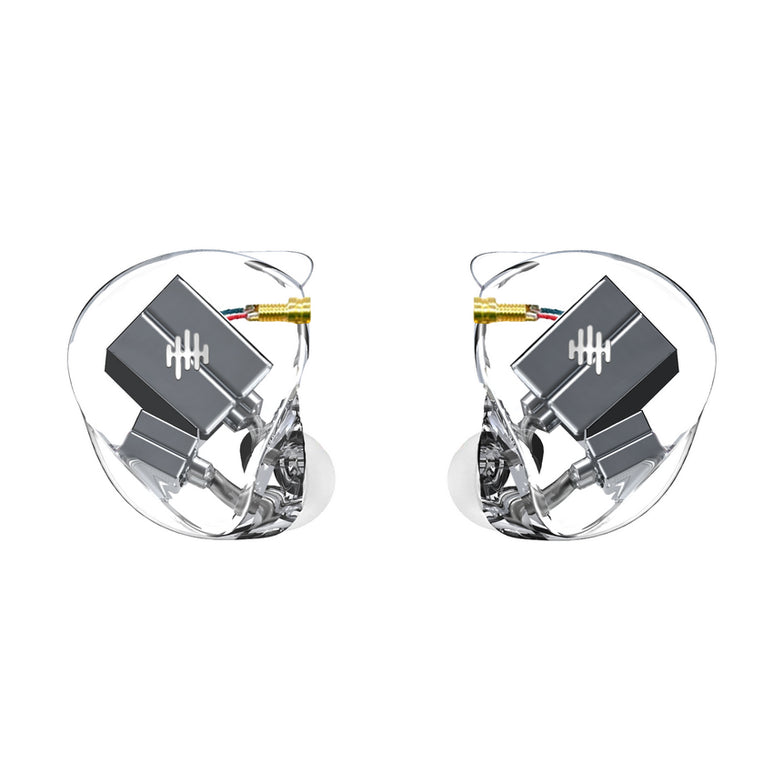Unveiling Audio Marvels: A Deep Dive into In-Ear Monitors for Musicians

In the ever-evolving landscape of music performance, the quest for sonic perfection has led to the innovation of various tools and technologies. Among these, In-Ear Monitors (IEMs) have emerged as crucial companions for musicians, changing the way they experience their craft on stage. Let’s look into the world of IEMs to find out what they are, how they work, and why musicians should consider adopting them as an essential part of their equipment arsenal.
What are In-Ear Monitors (IEMs)?
In-ear monitors, or IEMs, are personal audio devices designed to deliver the highest-quality sound directly into the ears of musicians during live performances. These compact, custom-fitted earpieces serve as an alternative to traditional stage monitors or floor wedges, providing a more controlled and immersive listening experience. Unlike bulky headphones, IEMs are discreet and fit snugly into the ear canal, isolating the performer from external noise while delivering a tailored mix of audio sources.
How do IEMs work?
The functionality of IEMs revolves around a combination of audio technology and ergonomic design. Here's a breakdown of the key components and their roles in delivering an exceptional auditory experience:
- Drivers
At the core of every IEM are the drivers – miniature speakers responsible for converting electrical signals into sound waves. IEMs typically feature multiple drivers, each dedicated to reproducing specific frequency ranges such as lows, mids, and highs. This multi-driver configuration allows for precise and detailed audio reproduction, ensuring that musicians hear every nuance of their performance.
- Crossovers
Crossovers are electronic circuits within IEMs that divide the audio signal into different frequency bands, directing each band to the corresponding driver. This meticulous separation enables the IEMs to reproduce a balanced and coherent sound spectrum, preventing distortion or muddiness in the audio mix.
- Customization
One of the most significant advantages of IEMs is their ability to be customized. Musicians can undergo a personalized fitting process, where impressions of their ear canals are taken to create custom-molded earpieces. This ensures a secure and comfortable fit, effectively isolating the ear from ambient noise and providing a consistent listening experience.
- Sound Isolation
The snug fit of IEMs not only enhances comfort but also acts as a barrier against external noise. This isolation is crucial for musicians performing in loud environments, such as noise from the crowd or audience, as it allows them to focus on their music without interference.
Why should musicians wear in-ear monitors?
Now that we understand the inner workings of in-ear monitors, let's explore the compelling reasons why musicians across genres and stages should consider incorporating them into their setups.
Personalized Monitoring
In a live performance setting, musicians often rely on stage monitors to hear themselves and their bandmates. However, these monitors may not always provide an accurate representation of the overall mix. IEMs offer a personalized monitoring experience, allowing each musician to have a customized mix tailored to their preferences. This level of control ensures that every instrument and vocal is heard with utmost clarity, contributing to a tighter and more polished performance.
Improved Stage Presence
The use of IEMs eliminates the need for bulky floor monitors, creating a cleaner and more visually appealing stage. Without the clutter of speakers and cables, musicians can move freely, enhancing their connection with the audience and elevating the overall aesthetics of the performance. This improved stage presence is particularly beneficial for artists who prioritize a seamless and professional presentation.
Noise Reduction
Playing in loud environments, such as concert venues or outdoor festivals, exposes musicians to high levels of ambient noise. IEMs' exceptional sound isolation ensures that performers can focus on their music without being distracted by external factors. This not only enhances the quality of the live experience but also contributes to the long-term preservation of hearing health.
Consistent Audio Quality
Traditional stage monitors often suffer from inconsistencies in sound distribution, leading to fluctuations in audio quality at different positions on stage. In contrast, IEMs deliver a consistent and reliable audio experience regardless of the performer's location. This uniformity is crucial for achieving a cohesive sound, especially in larger venues where stage monitor coverage may be uneven.
Protection Against Feedback
Feedback, the notorious screeching sound caused by the interaction between microphones and speakers, can be a nightmare for live performers. IEMs significantly reduce the risk of feedback since they operate within the performer's ears, away from microphones. This allows musicians to crank up their monitor levels without fear of causing feedback, empowering them to play at their desired volume without compromise.
Enhanced Communication
In larger bands or orchestras, effective communication is key to a seamless performance. IEMs facilitate clear communication between musicians by providing a dedicated channel for talkback or intercom systems. This ensures that cues, changes in arrangement, or other important information can be relayed swiftly and without confusion.
Versatility in Monitoring
Musicians often find themselves in diverse performance scenarios, from intimate acoustic sets to high-energy rock concerts. IEMs offer the flexibility to adapt to these varying environments by allowing performers to switch between different mixes or presets. This versatility ensures that musicians can optimize their monitoring setup to suit the specific demands of each performance.
In-ear monitors represent a shift in the way musicians perceive and engage with their music on stage. The ability for advanced audio technology, customized design, and ergonomic functionality makes IEMs an indispensable tool for performers seeking precision, control, and an immersive sonic experience. Whether you're a solo artist, part of a band, or a member of a symphony orchestra, the adoption of IEMs opens up a realm of possibilities, enhancing your connection with the music and the audience while safeguarding your hearing health in the process. As the music industry continues to evolve, in-ear monitors stand as a testament to the commitment of musicians to push the boundaries of sonic excellence and deliver performances that resonate with unparalleled clarity.


